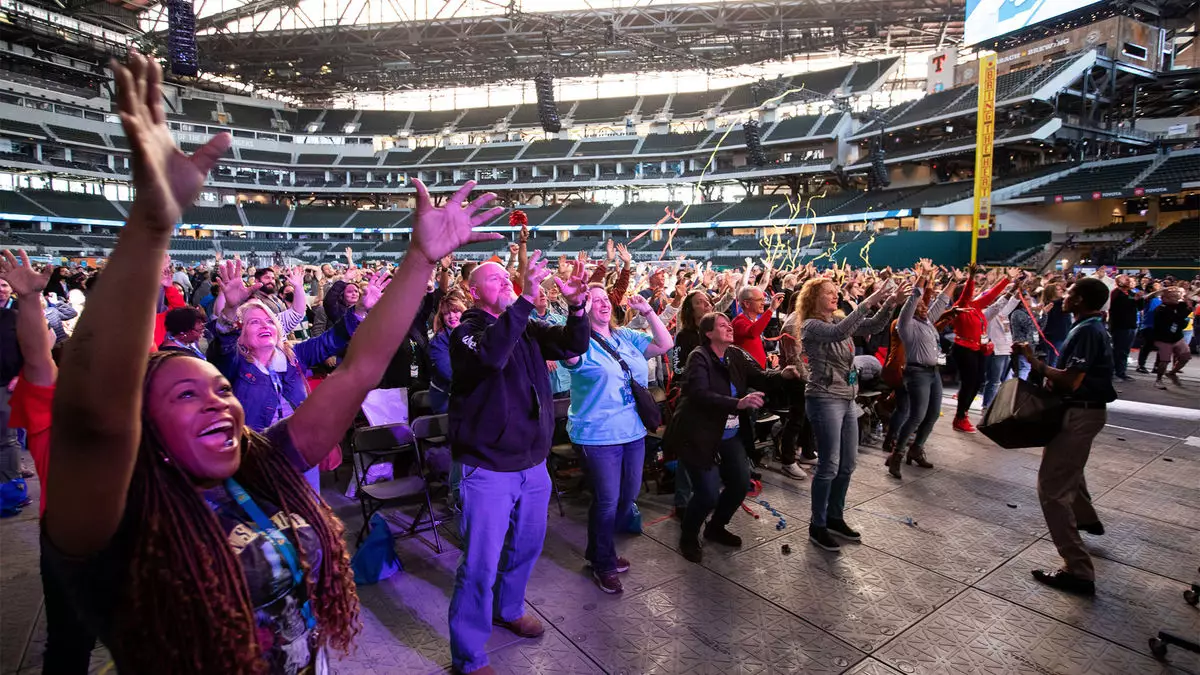In a significant turn of events, Southwest Airlines has made headlines with its recent decision to freeze corporate hiring as part of a broader strategy to cut costs. Such measures reflect the airline’s urgent need to bolster its financial performance amid heightened economic pressures. The company’s cancellation of its much-anticipated corporate rallies, which typically serve as morale boosters for employees, signals a shift in priorities as they navigate through turbulent financial waters. These events, known for attracting thousands with games, prize giveaways, and entertainment, have been sacrificed for more stringent fiscal management.
In a communication addressed to employees, Southwest’s CEO Bob Jordan emphasized the importance of every dollar as the airline maneuvers towards recovery and enhanced financial health. His message illustrates a top-down approach to instilling a culture of accountability within the ranks. The freeze on corporate hiring, alongside the pause on summer internships, underscores the serious nature of the financial landscape the airline is facing. While commitments to currently hired interns will be honored, this decision shows a cautious stance towards future investments in human capital, suggesting that Southwest is prioritizing immediate operational stability over long-term expansion.
Last year, Southwest faced significant challenges from activist investor Elliott Investment Management which criticized the airline’s corporate governance and strategic direction. The intervention by Elliott led to a reformed board of directors, which in turn sparked a series of strategic changes within the airline, including the introduction of assigned seating and renovations to include extra-legroom seats. These initiatives highlight a shift in operational dynamics, aiming not only at enhancing customer experience but also at streamlining operations to drive profitability.
As part of its comprehensive financial strategy revealed in late September, Southwest has set ambitious revenue targets, aiming for an additional $4 billion in revenue and achieving a 10% profit margin by 2027. This robust plan signifies a forward-looking approach that seeks to innovate and adapt to shifting market demands. However, the recent announcement of key leadership transitions—a change in the roles of longtime CFO Tammy Romo and Chief Administration Officer Linda Rutherford—adds another layer of complexity to Southwest’s corporate landscape. With both executives set to exit on April 1, the airline is poised to embark on a search for new leadership that will guide it through this transformative period.
As Southwest Airlines embarks on these cost-cutting measures and strategic initiatives, the path ahead remains fraught with challenges. The experiences of the recent past underscore the necessity for robust financial performance and adaptability in the face of changing economic conditions. Stakeholders will be watching closely as the airline not only implements its financial strategies but also reassesses its corporate culture. The success of these initiatives will be determined by the airline’s ability to maintain employee morale and customer loyalty while executing a vision that ultimately secures its financial future.


Leave a Reply